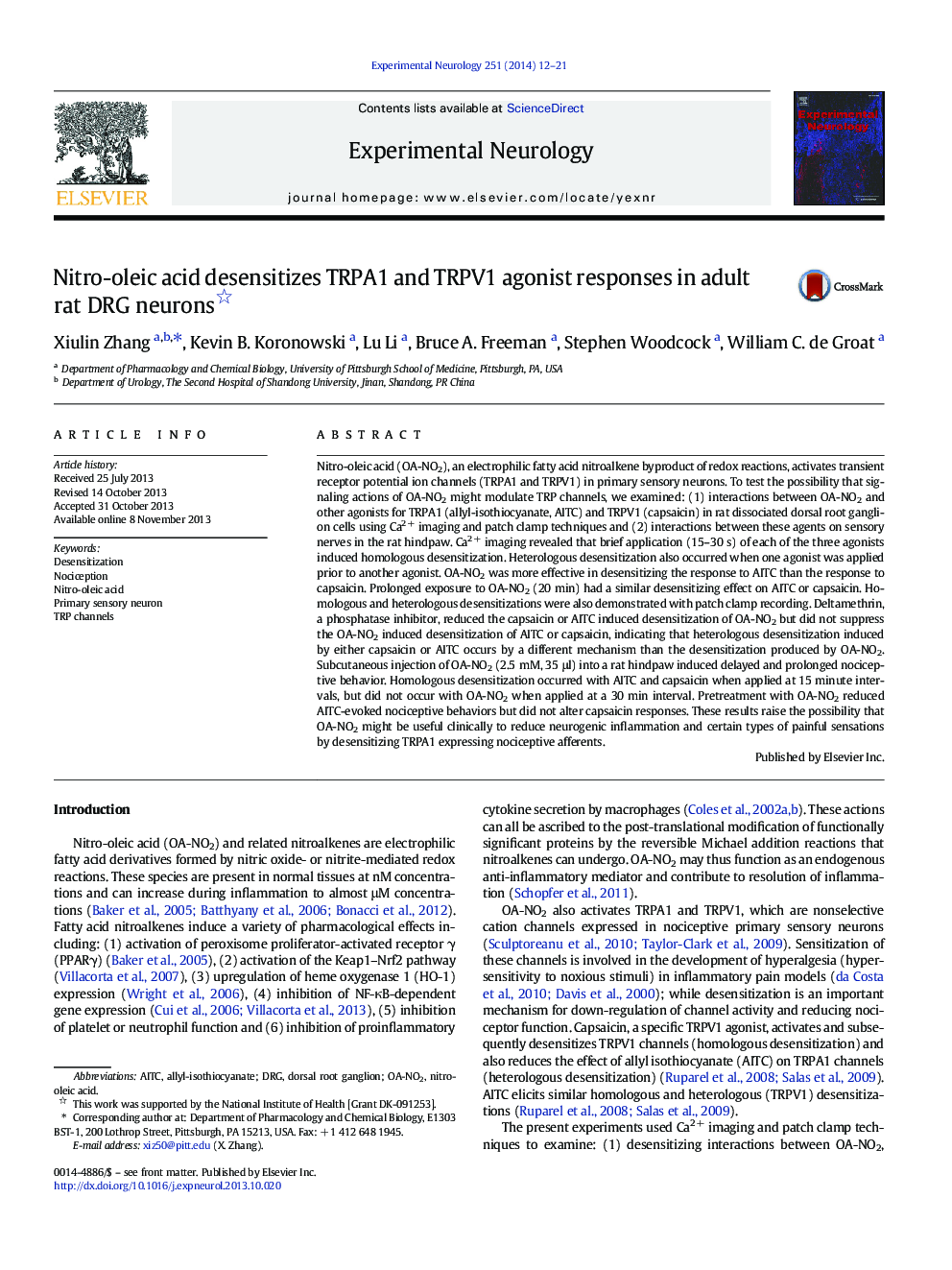| Article ID | Journal | Published Year | Pages | File Type |
|---|---|---|---|---|
| 6017892 | Experimental Neurology | 2014 | 10 Pages |
â¢Nitro-oleic acid desensitizes AITC and capsaicin induced Ca2 + increase and inward current.â¢Phosphatase inhibitor did not alter the nitro-oleic acid desensitization effects.â¢Phosphatase inhibitor reduced the capsaicin or AITC induced desensitization of OA-NO2.â¢Subcutaneous injection of nitro-oleic acid induced nociceptive behavior.â¢Subcutaneous injection of nitro-oleic acid reduced AITC-evoked nociceptive behaviors.
Nitro-oleic acid (OA-NO2), an electrophilic fatty acid nitroalkene byproduct of redox reactions, activates transient receptor potential ion channels (TRPA1 and TRPV1) in primary sensory neurons. To test the possibility that signaling actions of OA-NO2 might modulate TRP channels, we examined: (1) interactions between OA-NO2 and other agonists for TRPA1 (allyl-isothiocyanate, AITC) and TRPV1 (capsaicin) in rat dissociated dorsal root ganglion cells using Ca2 + imaging and patch clamp techniques and (2) interactions between these agents on sensory nerves in the rat hindpaw. Ca2 + imaging revealed that brief application (15-30 s) of each of the three agonists induced homologous desensitization. Heterologous desensitization also occurred when one agonist was applied prior to another agonist. OA-NO2 was more effective in desensitizing the response to AITC than the response to capsaicin. Prolonged exposure to OA-NO2 (20 min) had a similar desensitizing effect on AITC or capsaicin. Homologous and heterologous desensitizations were also demonstrated with patch clamp recording. Deltamethrin, a phosphatase inhibitor, reduced the capsaicin or AITC induced desensitization of OA-NO2 but did not suppress the OA-NO2 induced desensitization of AITC or capsaicin, indicating that heterologous desensitization induced by either capsaicin or AITC occurs by a different mechanism than the desensitization produced by OA-NO2. Subcutaneous injection of OA-NO2 (2.5 mM, 35 μl) into a rat hindpaw induced delayed and prolonged nociceptive behavior. Homologous desensitization occurred with AITC and capsaicin when applied at 15 minute intervals, but did not occur with OA-NO2 when applied at a 30 min interval. Pretreatment with OA-NO2 reduced AITC-evoked nociceptive behaviors but did not alter capsaicin responses. These results raise the possibility that OA-NO2 might be useful clinically to reduce neurogenic inflammation and certain types of painful sensations by desensitizing TRPA1 expressing nociceptive afferents.
